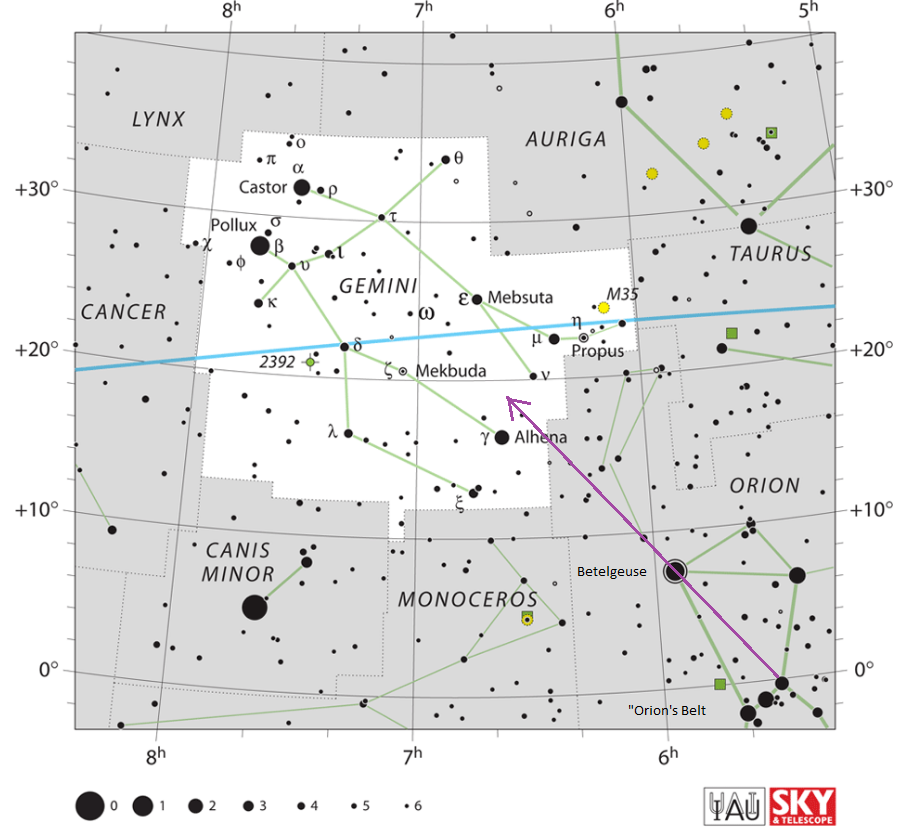On the evening of February 23, 2021, the waxing gibbous moon is bright enough to erase many stars from the blackboard of night. But you’ll likely still see the two bright Gemini “twins” – the stars Castor and Pollux – in the moon’s glare. Another bright star is nearby; it’s Procyon, brightest star in the constellation Canis Minor the Lesser Dog, also known as the Little Dog Star.
Look for the moon and constellation Gemini to reach their high point for the night somewhere around 9 to 10 p.m. local time. That’s the approximate time on your clock, no matter where you live around the globe.
A few 2021 lunar calendars left! Order yours before they’re gone.
As Earth spins under the sky, the stars, planets and moon all appear to shift westward throughout the night. Meanwhile, the moon’s motion in orbit around Earth is carrying it eastward through the constellations of the zodiac. Every month, the moon in its journey along the zodiac travels to the south of Castor and Pollux, and to the north of the Little Dog Star, Procyon.
Visit Heavens-Above to know the moon’s place upon the zodiac.
Visit Stellarium for a sky chart suited to your location on the globe.
Are you in the Southern Hemisphere? The moon passes between the Gemini stars and Procyon once a month for you, as well. Around mid-evening, people at temperate latitudes in the Southern Hemisphere will see the moon, Gemini stars and Procyon in their northern evening sky. Meanwhile, at mid-evening, we in the Northern Hemisphere will see all of these objects more south to overhead.
From the vantage point of either hemisphere, the other hemisphere sees things upside down. Up or down is a matter of perspective. To avoid ambiguity, we can say that Castor and Pollux lie north of the moon (in the direction of Polaris, the North Star), and Procyon lies south of the moon (in the direction away from the North Star). In fact, an imaginary line drawn from Procyon and going between Castor and Pollux would take you to Polaris. Be forewarned, though … from the Southern Hemisphere, Polaris sits below your northern horizon. Also, even from the Northern Hemisphere, it’s a mighty long jump from Procyon to Polaris!



Bottom line: On the night of February 23, 2021, watch the moon pass to the south of the Gemini stars Castor and Pollux and to the north of Procyon, aka the Little Dog Star.
EarthSky astronomy kits are perfect for beginners. Order today from the EarthSky store











